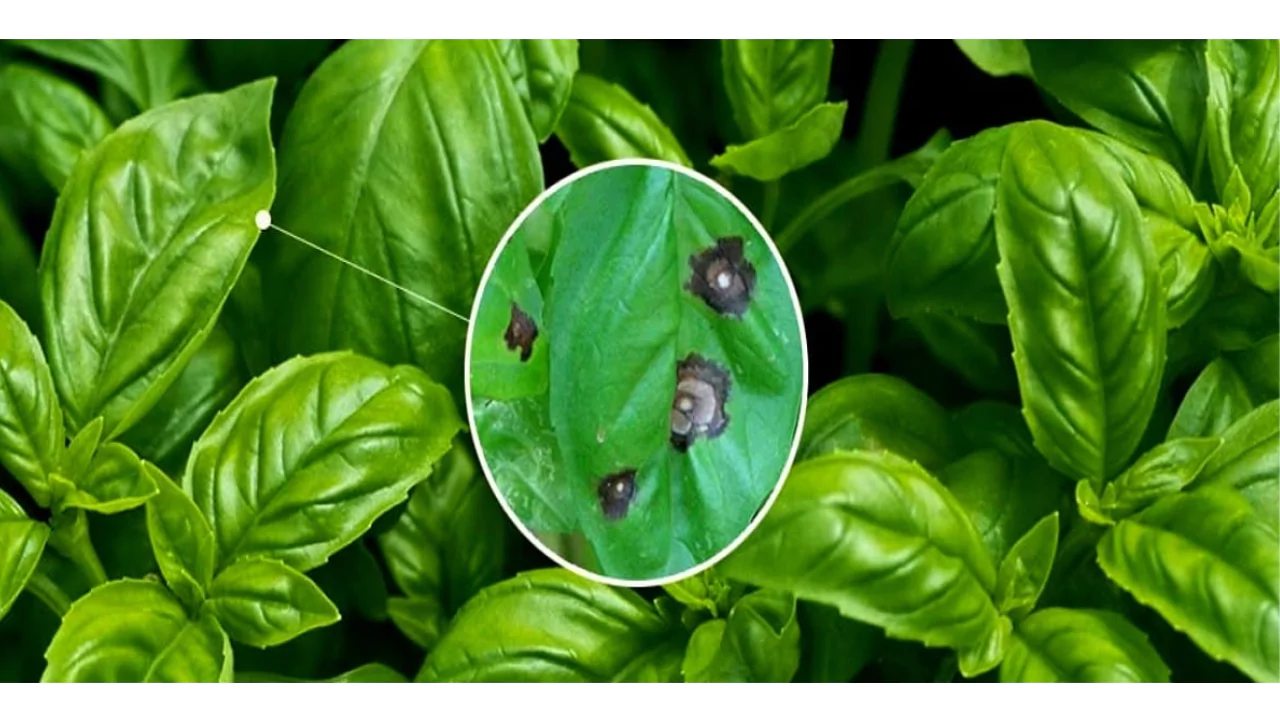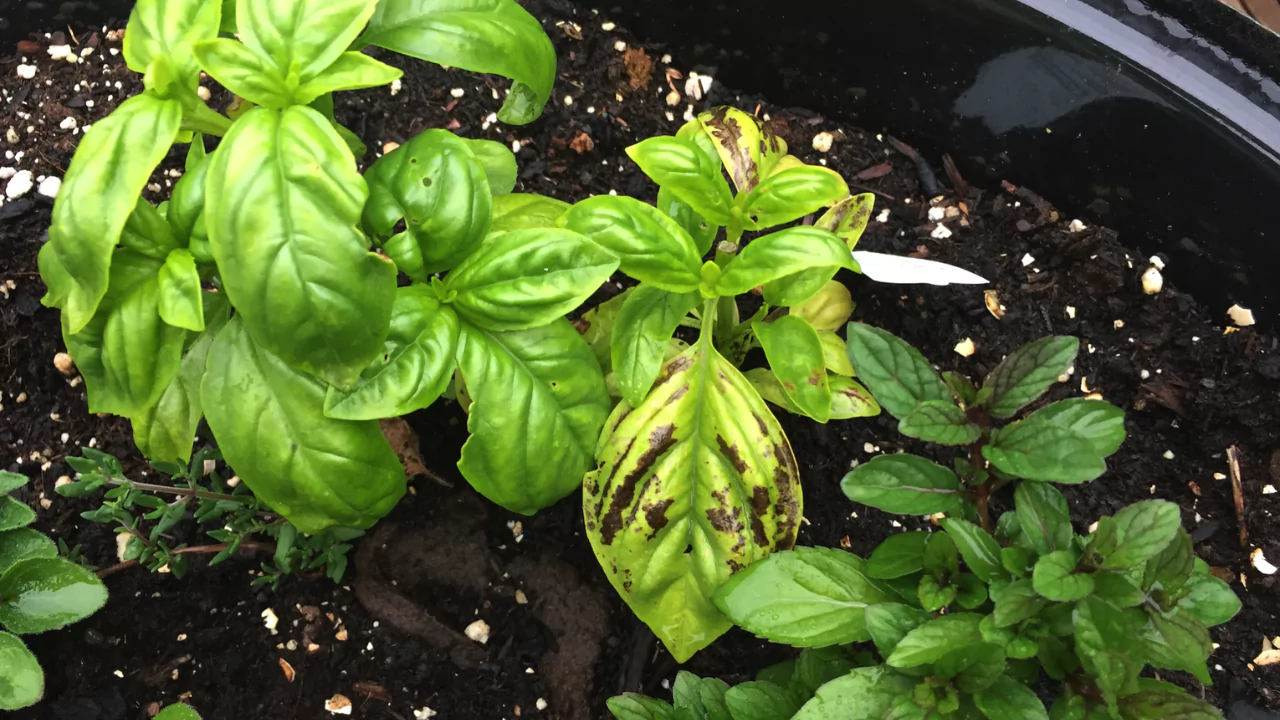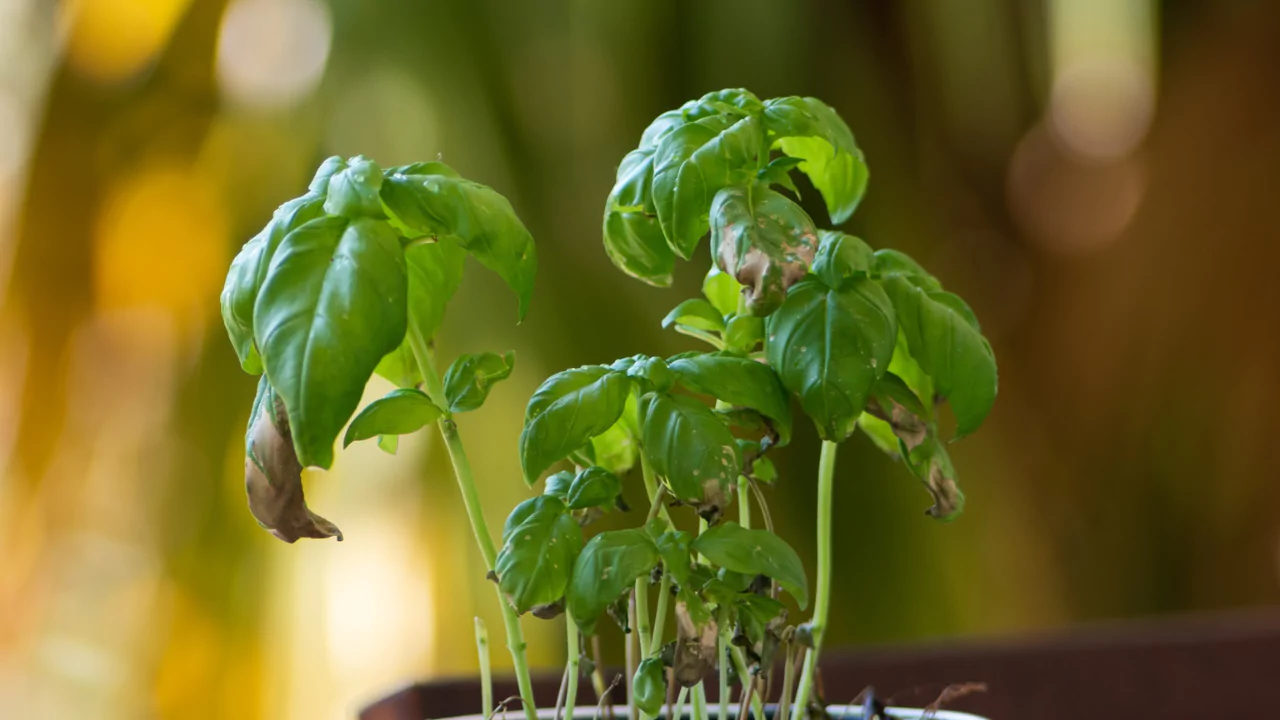
Basil features prominently among the world’s culinary herbs. It is a staple in Italian and Northeast Asian cuisines, and it hails from India. Many cooks and chefs refer to basil as the “king of herbs.”
Basil is an herb that is available in many varieties. The most common ones found in America include:
- Sweet basil
- Cinnamon basil
- African blue basil
- Holy basil
- Lemon basil
- Lettuce-leaf basil
While these varieties can be cultivated throughout the United States, they are vulnerable to conditions such as black spots on the leaves which can happen due to temperature fluctuations or fungal infections. Fortunately, there are methods to diagnose and treat some of the most straightforward cases of black spots.
Causes of Basil Black Spots
Basil is prone to attacks from natural enemies and environmental conditions.
Black spots are predominantly dealt with as fungal infections caused by either Pseudomonas cichorii or one of its downy mildew variants. Unfortunately there tends to be no alternative aside from blanket treatments that do not address underlying issues.
Most likely causes include early frostsun exposure causing cold damage leaving tip burn like symptoms on tender new growths.
Basil leaves are very delicate. A light frost can cause the edges and the most sensitive top leaves to die.
Diagnosis is straightforward due to similar symptoms caused by many fungi termed blight. Treatments also, are seemingly identical owing to a common root cause of fungal infection.
The following are examples of where spots may occur on the leaves:
- At the center
- On the edge
- On the leaf or stem
In most cases of black spotted leaves, examining the lower surfaces reveals some mycelium which suggests fungal growth.
The plant microbe downy mildew grows when there’s an excess or deficiency in some macronutrients.
Extended periods of high moisture can lead to downy mildew as well, creating conditions for pseudomonas cichorii bacterial leaf spot.
Treatment and Prevention of Basil Black Spots
Spots From Temperature Changes

A deep freeze is very detrimental to basil plants, often leading to blackened foliage. The chances increases further with unavoidable exposure prolonged subfreezing temperatures.
Basil plants exhibit initial signs through spotting on the surface which suggests deeper internal damage.To prevent basil leaves from yellowing, maintain proper ventilation.
Your main defense when fighting frost is providing adequate Isotherm protection which safeguards the plants from freezing temperatures.
The effects of cold temperatures on Basil include:
- Slowing its growth
- Increasing its susceptibility to disease
- Encouraging the growth of dark spots
Preventive measures for temperature related damages include:
Covering the basil plant. For short term cold weather, hoop tents are a very popular method for covering and protecting basil.
Trimming the plants down. Trim substantially, maximum leave harvest prior to the onset of cold weather. After pruning, preserve leaves by drying or freezing.
Hardening the plants.seedlings refers to acclimating them gradually before planting in garden beds. A week or two prior to planting, put the seedlings outside for gradual daily increments extending duration over several days.
Keeping the planting soil moist. all the time. Wet soil tends to stay warmer and retain more heat than dry soil.
Trimming the damaged basil leaves. A few affected leaves may allow the plant to endure, but prompt action is key before the damage spreads to other leaves.
Moving outdoor plants to a protected location. You can relocate them to an overhanging porch or close proximity to a warm structure until the temperature rises.
Transferring the plants indoors. Placing them beside an outward-facing window ensures sufficient sunlight. Just remember to water them every few days.
Spots from Poor Nutrition
Having proper nutrition in the soil is equally helpful in battling brown spots on basil.
Over- and under-application of nitrogen is a common cause of brown spots on basil leaves due to malnourishment. Balance such an imbalance with properly prepared organic compost instead of commercial mixtures.
The following actions will ensure effective nutrition for successful growth of your basil plants:
- Crafting a quality foundation by blending aged compost with other organic materials. Donor soils low in quality can be improved using manure combined with up to six inches of compost.
- Maintaining hydration levels in the soil and watering appropriately. Like many herbs, basils flourish when grown in moist environments. As soon as you notice dryness at the topsoil level, deep watering is essential.
- Applying liquid kelp every 7 to 10 days. Kelp will enrich the growing environment with both micro and macronutrients such as:
- Nitrogen
- Phosphorus
- Potassium
- Spacing your basil in a way that allows each plant easy access to the nutrients. You should space your basil about 12 to 18 inches apart.
- Draining and Preparing The Soil: A zone’s planting pH should be around 6.0 to 7.0.
Spots From Fungal Infections

Black or brown spots on basil plants can also result from fungal infection. Downy mildew is one of the most common issues when growing basil.
Unchecked, it can foster the growth of a bacterial leaf spot infection on your plants. One bacterial leaf is more than enough to rot an entire plant.
The fungus starts as nearly transparent greyish spots leafs, particularly at the underside surface where most leaves show signs of rot. The small spots gradually expand until they conquer much of the surface area underneath and toward the center.
As the bacterial leaf spot infection progresses, yellowing coupled with generous outros of crimson red followed by earthy tones obscures what was once vibrant foliage.
Basil is prone to bacterial infections especially and one such preventive measure includes infected with suspected like leafspot:
- Encourage proper ventilation by pruning healthy plants often spaced robustly while placed under generous amounts of sunshine.
- Watering is conducted in the cool hours of the day and focused specifically at the plant bases instead of through overhead sprinkling. This practice helps keep moisture levels lower during cooler temperatures.
- If fungal leaf spot arises, it can be effectively treated with one of many available fungicides.
- Some treatments include using natural methods such as soapy water or a tap water and baking soda mixture on infected leaves.
- Continued care includes pruning off diseased foliage, treating the basal stem, and then applying systemic insecticides or fungicides to the rest of the plant for thorough management.
Growing Healthy Basil Plants
Most underlying ailments within your basil plant’s foliage can be masked by black patch formations over time. Efficient problem-solving will remedy even these stubborn baselines. Remarkably resilient, blighted leaves are easily removed from an otherwise healthy plant without stunting growth. Thus, augmenting long-term yield potential.
Consider visiting The Gardening Channel if you want to cultivate basil or any other herb listed on their site